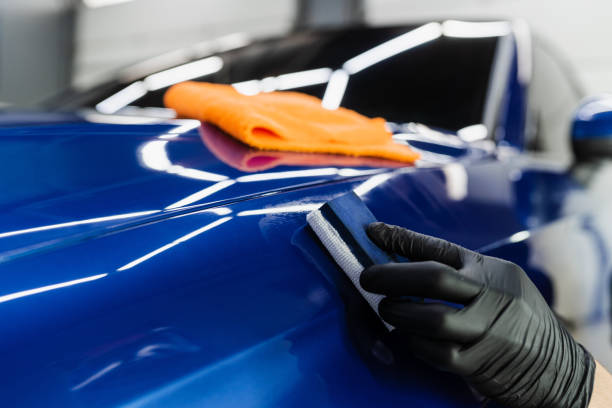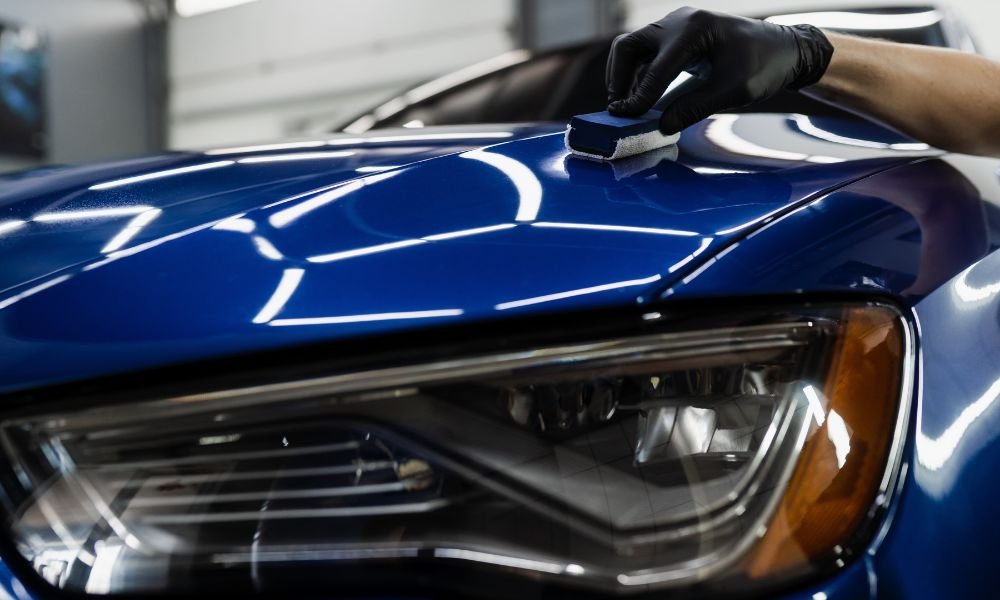Meticulous Services by Conforti Auto and Marine Detailing Ceramic Coating Experts
Meticulous Services by Conforti Auto and Marine Detailing Ceramic Coating Experts
Blog Article
Exactly How Describing Porcelain Finish Boosts the Long Life of Your Automobile's Paint
Ceramic covering has actually emerged as a critical innovation in automobile outlining, providing a lasting solution for protecting the stability of your auto's paint. Recognizing the ins and outs of just how ceramic finishing jobs and its benefits over conventional wax can offer beneficial understandings for auto owners.
What Is Ceramic Layer?
Comprehending the protective benefits of ceramic finish starts with acknowledging its composition and functionality. Ceramic finishing is a fluid polymer applied to the external surface areas of cars, mostly created to enhance and protect auto paint (Conforti Auto and Marine Detailing Ceramic Coating).
The coating's application involves precise prep work of the vehicle's surface, which should be devoid of pollutants, scrapes, and imperfections to ensure ideal adhesion. As soon as used, the ceramic layer cures to develop a rigid shield that can endure various ecological aspects, including UV rays, chemical discolorations, and oxidation.
Additionally, ceramic coatings are not just surface-level therapies; they permeate the paint to provide a lasting protection. This capability expands the life expectancy of the lorry's aesthetic appeals while keeping its worth with time. Understanding these fundamental facets of ceramic layer is essential for automobile owners seeking efficient services for paint conservation and improvement.
Benefits of Ceramic Covering
The benefits of ceramic coating expand much past its basic safety features. Unlike standard wax or sealers, ceramic layers produce a solid bond with the car's paint, enabling it to hold up against environmental risks such as UV rays, acid rain, and roadway salt.
Furthermore, ceramic coatings use hydrophobic properties, suggesting they drive away water and contaminants. This characteristic not only makes the car simpler to tidy however also reduces the frequency of cleaning, conserving both time and effort for auto owners. The slick surface developed by the layer prevents dirt and crud from sticking, enhancing the vehicle's total tidiness.
Furthermore, ceramic finishings enhance the deepness and quality of the paint, giving vehicles a glossy finish that is visually striking. This visual improvement better adds to preserving the auto's resale value, as a well-kept outside is a significant marketing point for prospective customers. On the whole, the advantages of ceramic coating make it a rewarding investment for any individual aiming to safeguard and boost their car's paintwork.
Just How Ceramic Coating Functions

The coating's hydrophobic properties drive away water and dirt, preventing the accumulation of grime on the surface area. This not only makes the vehicle much easier to tidy but also lowers the chance of scratches and swirl marks caused by conventional cleaning approaches. The ceramic layer acts as a shield versus UV rays, which can create fading and oxidation over time.
When healed, the layer exhibits amazing resistance go now to chemicals, including roadway salts, bird droppings, and tree sap, which can or else damage the paint. The longevity of ceramic coverings can last for several years, relying on aspects such as upkeep and ecological conditions. Generally, the chemical bonding process of ceramic layers gives a durable protection that maintains the stability and look of a car's paintwork.
Comparing Ceramic Finishing to Wax
Comparing ceramic finishing to standard wax reveals considerable differences in efficiency and durability. While both products aim to secure a car's paint, their compositions and toughness set them apart. Wax, normally made from natural carnauba or artificial website link products, gives a temporary shield that usually lasts just a couple of weeks to a couple of months, depending on ecological problems and maintenance routines.
On the other hand, ceramic finishes are sophisticated solutions made up of inorganic products that bond chemically with the vehicle's paint. This creates a durable, semi-permanent layer of defense that can endure for several years. As an outcome, ceramic finishings offer exceptional resistance to UV rays, chemical stains, and physical abrasion, considerably minimizing the risk of oxidation and fading.
Furthermore, the hydrophobic homes of ceramic coatings make certain that water grains up and rolls off the surface, making it harder for dirt and grime to stick. This simplicity of cleansing is a notable benefit over wax, which can bring in dust and require frequent reapplication. Inevitably, for car owners seeking lasting security and boosted visual appeal, ceramic layers present a more reliable option to conventional wax items.
Maintenance Tips for Longevity
Correct upkeep is essential for optimizing the durability of a ceramic covering. Routine cleansing is the structure of efficient maintenance. Make use of a pH-balanced auto shampoo to stop deteriorating the finish, and stay clear of automated auto cleans with rough brushes that can trigger micro-scratches. Rather, go with a touchless auto wash or hand clean.
To keep the hydrophobic properties of the ceramic coating, take into consideration using a maintenance spray or booster especially check my blog made for ceramic finishes every few months. This will certainly enhance the protective layer and boost water beading.
Furthermore, prevent exposing the covered surface to severe environmental problems whenever possible. Vehicle parking in shaded areas or utilizing an automobile cover can prevent UV damages and contamination from bird droppings, tree sap, or industrial after effects.
Finally, inspect the layer regularly for signs of wear or damages. If you notice a reduction in hydrophobic behavior, it may be time for a specialist reapplication. By adhering to these upkeep suggestions, automobile owners can substantially extend the life and efficiency of their ceramic coating, making sure that their car's paint stays safeguarded and visually appealing for many years ahead.
Conclusion

Report this page